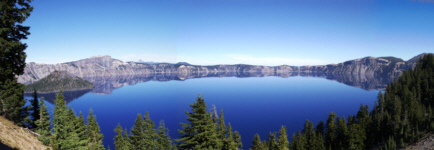





© 1995-2012 LOGIZTIX
Logistix Productions Inc
-
Quality photography is one of the most important aspects of an Internet presence. If a picture is worth a thousand words, having one that best captures what you're trying to say is critical. A good photograph is an opportunity to set yourself above the competition in nearly any business. The thumbnails shown link to higher resolution '.jpg' images that have been sized down from the magazine quality resolution of the original files produced with our equipment.

Available Now! The latest Logiztix 12-month calendar and calendar prints. Order yours now from CafePress! This year's print features the Coquille River Lighthouse, while the 12-month calendar features scenic images from this gallery as well as others not shown here. All pictures were taken in Southwestern, Southern and Central Oregon by William Reeves, President of Logistix Productions, Inc. 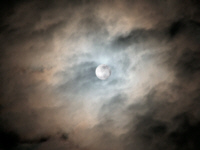
This image of the moon was taken from a gravel parking lot visible from our Coos Bay studio. Capturing the detail of the clouds without 'washing out' the moon exceeds the contrast range of the best digital cameras. This shot was actually the 'digital darkroom' merge of an image balanced on the moon detail with one taken a few frames after it, balanced on the clouds themselves. 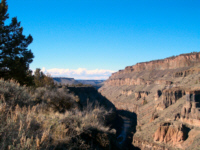
This image was taken at the canyon of Crooked River Ranch in Central Oregon. In real estate, good photography can make the difference in attracting potential buyers. Having your web site developed by someone that understands this concept is something to seriously consider when you list your home or land. Location photography is one of our specialties. 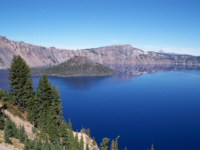
Oregon's Crater Lake National Park is a test of a consumer grade camera's capabilities. The range of blues ends up looking 'banded' in a JPG format. While acceptable for web use, print use requires keeping the image in a raw, bit by bit format that preserves the smooth gradation of blue. While the larger versions of the images here are about 0.3 MB in size to look even this good, they are over 15 MB for print use. 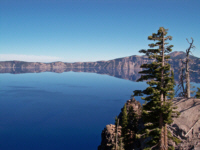
Another shot of Crater Lake that shows some of the banding common with JPG formatting. This banding is entirely absent in the original version, but proper processing can minimize the effect and still provide a small enough file size for web use. The trade-offs in download speed and image quality are a delicate balance in digital photography for the Internet. 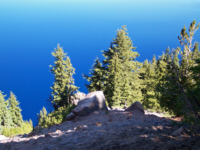
This Crater Lake shot by itself is a bit of an optical illusion. While it looks like a shot taken from below a stand of trees into a clear sky, it was actually shot from above the trees into the canyon with the backdrop of the lake below. Crater Lake is the deepest lake in the United States, which is only one of the reasons it appears so unbelievably blue. In the context of the other images, it isn't quite as difficult to believe what you're seeing. 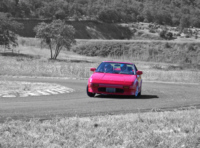
This is an edited action shot of a car on a track, masked in the digital darkroom to show only the car itself in color. This was intended to draw attention to the action and away from the background. The image takes on a 3 dimensional look with the 'white' areas appearing almost pearlescent silver on metallic paper. When we saw this visual technique used in a car commercial months later, we again realized what a powerful effect this can be. 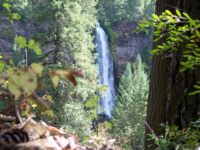
This image of Mill Creek Falls in Prospect, Oregon was an exercise in getting a cheaper compact camera to do things it doesn't want to. Capturing the waterfall's movement was tough without the benefit of both an exposure and shutter adjustment at the same time. The best approach proved to be a timed shot, using the ground as a stabilizer. The result was a feeling of having stumbled upon the waterfall as the viewer emerges from the forest. 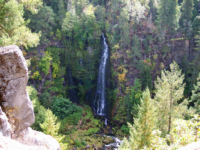
A similar approach as the Mill Creek image was taken with this shot of Barr Creek Falls, also in Prospect. This one as well used a timed shot, but required a tiny tripod to stabilize the camera. Both of these falls feed into the Upper Rogue River, providing a beautiful subject for this kind of work. Further proof that even a cheaper camera can be fooled into thinking differently. 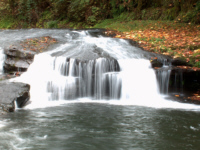
This shot was done with a camera that supports the exposure settings we were needing for Mill Creek and Barr creek. Taken near Triangle Lake, the fall colors and overcast skies produced a great environment for this style of shot. This image is included in our new calendar. 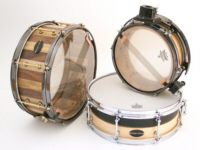
This image was used in a calendar for Oregon Drum. The layout was designed to allow the reflections of the two smaller drums to appear in the bottom head of the larger one without other background objects showing up in the head or reflections within the chrome. This calendar layout was photographed using the specialized lighting set-up in our studio. 
This is a typical product shot. The layout requires a background that can be corrected to pure white for transparent overlay used in magazines or retailer web sites. This image was photographed using the specialized lighting set-up in our studio made necessary due to the numerous chrome pieces that would otherwise reflect any objects in the area, including the camera itself. 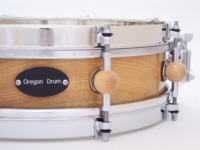
This is another take on a product shot. This type of image is more likely to be used for a web site or catalog page accent, rather than distributed to retailers for product representation. Getting a proper depth of field and utilizing lighting techniques to eliminate unwanted reflections in the chrome were key to this image. The final step is removing the camera lens reflection. 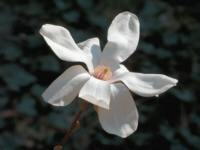
This is a shot of a Magnolia blossom that had a 'shelf life' of about 3 days outside the window of our studio. With the constant winds of the area, a close-up can be a challenge. We've learned that nature's timetable for the perfect shot can't be negotiated, so patience and a large memory card is where the magic lies. The initial settings chosen for this unedited shot allowed an easy 'blurring' of the background to bring the focal point to the magnolia. 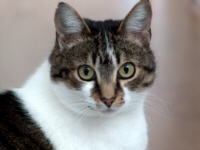
Still life is one thing, but capturing live animals is quite another. Cats have a tendency to investigate a camera any time one comes out. The trick was getting back some distance and using the incredible zoom capabilities of modern digital equipment to get in much closer without inspiring too much curiosity. The use of equipment capable of firing multiple shots in rapid succession is critical to capturing life when it isn't exactly still. 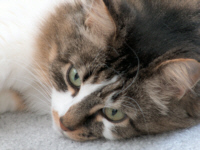
This is another example of preventing distraction of an overly curious subject with a long range zoom lens. The image was one of only a few shots that had that 'glamour shot' framing look we were going for. This is another shot that hasn't had any editing done to the raw image. 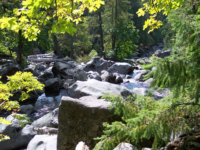
This image of fall foliage around the Upper Rogue River was taken with the sun facing the lens. The idea was to place the shot to where the changing leaves blocked the sun, yet were illuminated by it at the same time. Few shots from this trip were able to use a tripod due to the terrain, so less common methods and techniques were utilized to steady the camera. 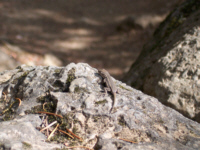
This baby lizard was photographed along a trail near the Upper Rogue River. These things are surprisingly camera shy, so the absence of a decent zoom length made capturing one at all a challenge. Patience and timing paid off, though they blend in so well that it is tough to tell the little guy is even there at the thumbnail level. 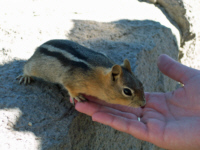
The chipmunks at Crater Lake, on the other hand (pun intended), are a little more accepting of people. They prefer those that have something to offer, but a chipmunk in the hand is still worth a picture. This shot was the only one in a group where enough of the active chipmunk was in focus to work with. 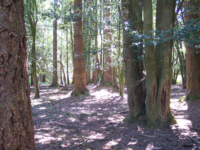
This image was taken within a forested area just outside of Myrtle Point. The idea was to focus on the depth of forest, while trapping as much sunlight on the various leaves as possible. While crisp, clean focus of the forefront subject is a simple task, it's sometimes difficult to accomplish without blurring the objects in the distance. Achieving both in one image requires proper technique and quality equipment. 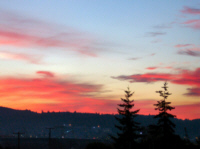
Sunsets like this are a common site out of our studio's West window, which usually inspires packing up some gear and driving 10 miles to the beach to find it socked in with fog. Instead, this shot was taken straight from the studio, set up to reduce the contribution of foreground objects that tend to clutter the image. A dormant radio tower was removed from the shot in the 'digital darkroom'. 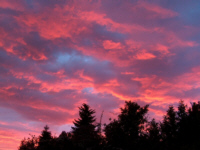
This is a somewhat less common site out of our studio's West window. The best angle was blocked by trees, so we grabbed the equipment and ran up the hill to capture this wild color range that appeared only briefly. This shot was set up to reduce the contribution of foreground objects and edited only for size and aspect in the 'digital darkroom'. 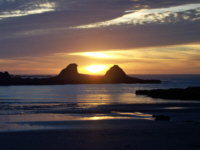
Once in a while, driving to the beach to catch a sunset actually works. This is a one of several shots of Sunset Bay State Park. We waited for the glow to settle between the rocks for this interesting effect. We have also produced a panorama that incorporates this image as well. Prints of Sunset Bay and a number of other local landmarks are available for purchase. 
This is the Lost Creek Dam, US Army Corps of Engineers on the Rogue River. This series of shots was an experiment in perspective and framing. Certain man-made structures can give the appearance of a wide-angle lens being used when it actually wasn't. The clouds were edited to remove the vapor trail of a jet, as this line conflicted with those naturally occuring in the shot. 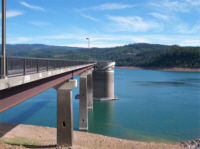
This is the lookout at the Lost Creek Dam. Another perspective challenge for the digital darkroom. The shot was taken level, without a wide-angle lens. Unfortunately, the light poles didn't show up at all parallel due to lens distorion. Some minor correction was made to this and a couple of small items that were in the water.
